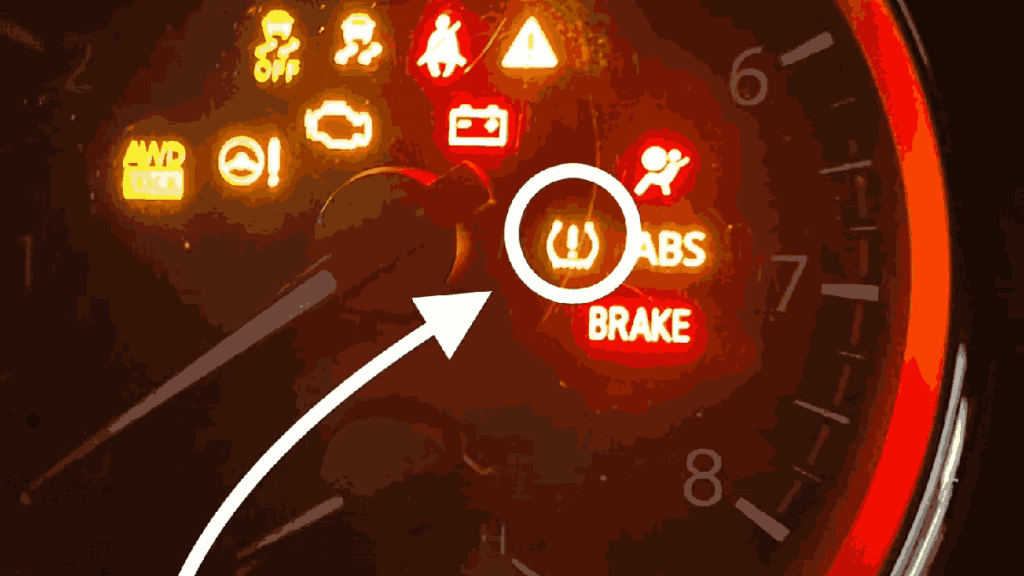Introduction
Have you ever noticed a strange symbol light up on your car’s dashboard that looks like a horseshoe with an exclamation point in the middle? That’s the tpms light, and it’s more important than most drivers realize. The tpms light stands for Tire Pressure Monitoring System light. When it turns on, it’s your vehicle’s way of telling you something’s not right with the air pressure in one or more of your tires.
Driving with incorrect tire pressure can lead to poor fuel economy, reduced tire life, and even unsafe driving conditions. Understanding the tpms light, what it means, and how to respond to it can save you time, money, and possibly avoid an accident. In this blog post, we’ll break down everything you need to know about the tpms light in a simple and user-friendly way.
What is tpms light?
The tpms light is a warning signal that appears on your car’s dashboard when one or more of your tires are significantly under-inflated. TPMS stands for Tire Pressure Monitoring System, a built-in system in modern vehicles that continuously checks the air pressure in each tire.
There are two types of TPMS: direct TPMS, which uses pressure sensors inside the tire to measure air pressure, and indirect TPMS, which uses wheel speed sensors from the anti-lock braking system (ABS). Regardless of the type, when the tpms light activates, it means your tires need attention.
If the tpms light flashes when you start the car and then stays on, it might indicate a system malfunction. If it just stays solid, it likely means your tires are low on air. Either way, it’s a signal that should never be ignored. Proper tire pressure helps maintain vehicle control, improves fuel efficiency, and extends tire life.
Why is tpms light important?
The tpms light plays a critical role in maintaining your safety and your vehicle’s performance. Here’s why it matters:
Key reasons why tpms light is important:
- Improves Safety: Low tire pressure can increase stopping distance and the risk of tire blowouts.
- Better Fuel Efficiency: Properly inflated tires reduce rolling resistance, which helps improve mileage.
- Extended Tire Life: Tires wear more evenly when they’re inflated correctly, reducing the need for early replacement.
- Environmental Impact: Well-maintained tires reduce carbon emissions due to better fuel economy.
- Legal Compliance: In many countries, having a functioning tpms light system is a legal requirement for road safety inspections.
Ignoring the tpms light can lead to bigger problems. It’s designed to give you a heads-up before a flat tire happens or fuel costs skyrocket. Acting on this signal is a smart and simple step toward responsible driving.
Step-by-step guide
When your tpms light comes on, here’s what you should do:
Step 1: Pull Over Safely
If the tpms light suddenly appears while driving, safely pull over and inspect your tires visually.
Step 2: Check Tire Pressure
Use a tire pressure gauge to measure the PSI (pounds per square inch) of each tire. Compare the readings with the manufacturer’s recommended PSI found on a sticker inside the driver’s door.
Step 3: Inflate or Deflate Tires
Adjust the tire pressure as needed. Many gas stations have air pumps available for public use.
Step 4: Reset the TPMS
Some vehicles automatically reset the tpms light once the correct pressure is restored. Others may require a manual reset, which you can do by holding the TPMS button or following the steps in your owner’s manual.
Step 5: Visit a Mechanic
If the tpms light remains on after following the above steps, there might be a fault in the sensor, and it’s best to have it checked by a professional.
Advantages and disadvantage
Like any technology, the tpms light system has both pros and cons.
Advantages:
- Early Warning System: Alerts you before a tire becomes dangerously under-inflated.
- Promotes Fuel Efficiency: Helps keep tires properly inflated, saving on fuel costs.
- Saves Tire Replacement Costs: Keeps tire wear even and prolongs their life.
- Boosts Safety: Reduces the chance of tire-related accidents.
Disadvantages:
- False Alarms: Sudden temperature drops or sensor glitches can trigger the light unnecessarily.
- Sensor Replacement Costs: TPMS sensors can be expensive to replace when they fail.
- Inconsistent in Older Cars: Some older TPMS systems may not be as accurate or reliable.
Despite its drawbacks, the tpms light system is still a valuable safety feature every driver should understand.
Common FAQs
Here are answers to some of the most common questions drivers ask about the tpms light.
Q1: What should I do if the tpms light turns on while I’m driving?
Pull over safely and check your tire pressures. Reinflate if needed.
Q2: Can I drive with the tpms light on?
It’s not recommended. Driving with low tire pressure can be dangerous and damage your tires.
Q3: How do I turn off the tpms light?
Fix the tire pressure issue and the light may turn off automatically. Some cars need a manual reset.
Q4: Can cold weather affect the tpms light?
Yes. Cold temperatures can cause tire pressure to drop, which may trigger the tpms light even if there’s no leak.
Q5: Do all cars have a tpms light?
No. TPMS is mandatory in newer vehicles (usually post-2007 in the US), but older cars may not have it.
Understanding these basics helps you deal with the tpms light confidently and keep your vehicle in good shape.
Conclusion
The tpms light is more than just another dashboard symbol. It’s a vital alert system that helps you maintain the correct tire pressure in your vehicle. Responding promptly to this light can prevent accidents, improve fuel efficiency, and extend the life of your tires.
When the tpms light turns on, don’t ignore it. Start with a quick visual inspection of your tires. If they seem low, check the pressure and inflate them to the recommended level. If the light doesn’t go off after that, refer to your car’s manual or consult a mechanic.
Tires are your vehicle’s only point of contact with the road. Keeping them in top condition is key to your safety and your wallet. The tpms light is a helpful reminder to give your tires the attention they deserve.
In today’s world, with fuel costs rising and safety concerns growing, this small warning light holds a lot of value. Understand it, respect it, and act on it. That’s the smart way to drive.
Bonus points
To give you even more insight, here are some additional points about the tpms light you might find useful:
- Seasonal Tire Pressure Changes: Keep in mind that weather changes can affect tire pressure, which may trigger the tpms light even if your tires aren’t leaking.
- TPMS Battery Life: The sensors inside the tire have batteries that can last 5-10 years. Once they die, the sensor and sometimes the whole TPMS system may need replacement.
- Aftermarket Tires and Rims: If you switch to aftermarket wheels or tires, ensure they’re compatible with your car’s TPMS system or you might face constant warnings.
- Spare Tires May Lack Sensors: If you’re using a spare tire and the tpms light is still on, the spare may not have a sensor installed.
Keeping these points in mind will help you stay ahead of any issues and use the tpms light system effectively.






